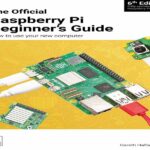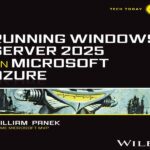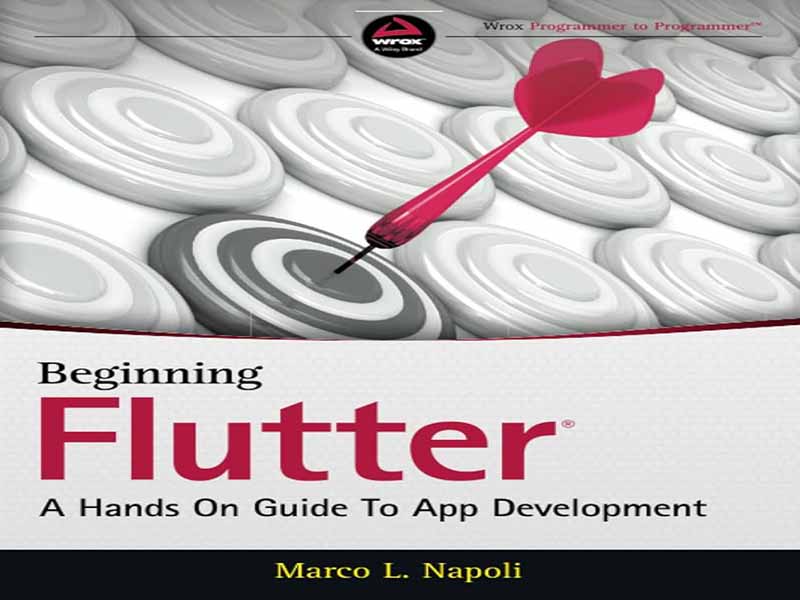- عنوان کتاب: Beginning Flutter / A Hands on Guide to App Development
- نویسنده: Marco L. Napoli
- حوزه: توسعه بازی
- سال انتشار: 2020
- تعداد صفحه: 511
- زبان اصلی: انگلیسی
- نوع فایل: pdf
- حجم فایل: 23.5 مگابایت
فلاتر در سال 2015 در اجلاس توسعه دهندگان دارت با نام Sky رونمایی شد. اریک سیدل (مدیر مهندس Flutter در گوگل) سخنرانی خود را با گفتن اینکه او آنجا بود تا درباره Sky صحبت کند، که یک پروژه آزمایشی بود که به عنوان «دارت در موبایل» ارائه شده بود، شروع کرد. او یک نسخه ی نمایشی در پلی استور اندروید ساخته و منتشر کرده بود و دمو را با بیان اینکه هیچ جاوای طراحی این اپلیکیشن وجود ندارد، یعنی بومی بودن آن را شروع کرد. اولین ویژگی که اریک نشان داد چرخش مربعی بود. راندن دستگاه با فرکانس 60 هرتز دارت بود که اولین هدف سیستم بود: سریع و پاسخگو بودن. (او میخواست خیلی سریعتر [یعنی ۱۲۰ هرتز] پیش برود، اما به دلیل توانایی دستگاهی که استفاده میکرد محدود بود.) اریک به نمایش چند لمسی، اسکرول سریع و سایر ویژگیها ادامه داد. Sky بهترین تجربه تلفن همراه (برای کاربران و توسعه دهندگان) را ارائه کرد. توسعه دهندگان از کار بر روی وب درس گرفتند و فکر کردند که می توانند بهتر عمل کنند. رابط کاربری (UI) و منطق تجاری هر دو با دارت نوشته شده بودند. هدف این بود که پلتفرم-آگنوستیک باشد. به سرعت به سال 2019 بروید و Flutter اکنون پلتفرم نمایشگر هوشمند Google از جمله Google Home Hub را تقویت می کند و اولین گام به سمت پشتیبانی از برنامه های دسکتاپ با سیستم عامل Chrome است. نتیجه این است که Flutter از برنامه های دسکتاپ در حال اجرا در مک، ویندوز و لینوکس پشتیبانی می کند. Flutter به عنوان یک چارچوب رابط کاربری قابل حمل برای همه صفحهها مانند تلفن همراه، وب، دسکتاپ و دستگاههای تعبیهشده از یک پایگاه کد واحد توصیف میشود. این کتاب به شما می آموزد که چگونه با استفاده از فریم ورک فلاتر و دارت به عنوان زبان برنامه نویسی، اپلیکیشن های موبایل را برای iOS و اندروید از یک پایگاه کد توسعه دهید. از آنجایی که Flutter در حال گسترش فراتر از تلفن همراه است، می توانید دانشی را که در این کتاب یاد می گیرید استفاده کنید و آن را در پلتفرم های دیگر به کار ببرید. شما نیازی به داشتن تجربه برنامه نویسی قبلی ندارید. کتاب با اصول اولیه شروع می شود و به سمت توسعه برنامه های کاربردی آماده تولید پیش می رود. من این کتاب را به سبکی ساده و ساده نوشتم تا هر مفهومی را به شما آموزش دهم. میتوانید تمرینهای سبک تمرینی «امتحانش کنید» را برای پیادهسازی آنچه یاد میگیرید و ایجاد برنامههای کاربردی متمرکز بر ویژگی دنبال کنید. هر فصل بر اساس موارد قبلی است و مفاهیم جدیدی را برای پیشرفت دانش شما برای ساختن برنامه های سریع، زیبا، متحرک و کاربردی اضافه می کند. در پایان این کتاب، میتوانید دانش و تکنیکهایی را که آموختهاید استفاده کنید و از آنها برای توسعه برنامههای کاربردی خود استفاده کنید. در چهار فصل آخر کتاب، یک برنامه مجله با قابلیت ذخیره دادهها به صورت محلی و یک برنامه مجله دوم ایجاد میکنید که ردیابی خلق و خوی را با مدیریت وضعیت، احراز هویت و قابلیتهای همگامسازی ابر داده چند دستگاهی از جمله همگامسازی آفلاین اضافه میکند. برای برنامه های موبایل امروزی ضروری است. من تمام تلاش خود را کرده ام تا تکنیک ها را با استفاده از یک رویکرد دوستانه و متعارف به شما آموزش دهم تا بتوانید اصول اولیه را تا مفاهیم پیشرفته مورد نیاز برای محل کار بیاموزید. از اولین باری که گوگل را در حال ارائه Flutter دیدم، توجه من را به خود جلب کرد. چیزی که من را به ویژه جذب فلاتر کرد مفهوم ویجت ها بود. شما ویجت ها را می گیرید و آنها را با هم لانه می کنید (ترکیب می کنید) تا رابط کاربری مورد نیاز را ایجاد کنید، و بهتر از همه، می توانید به راحتی ویجت های سفارشی خود را ایجاد کنید. مورد مهم دیگری که من را به Flutter جذب کرد، توانایی توسعه برای iOS و Android از یک پایگاه کد واحد بود. این چیزی است که من برای مدت طولانی به آن نیاز داشتم و تا زمانی که فلاتر راه حل عالی پیدا نکردم. فلاتر بیانی است. این یک چارچوب واکنشگرای مدرن است که در آن ویجتها با توجه به وضعیت فعلیشان، رابط کاربری را بررسی میکنند.
Flutter was unveiled at the 2015 Dart Developer Summit under the name Sky. Eric Seidel (engineer director for Flutter at Google) opened his talk by saying that he was there to speak about Sky, which was an experimental project presented as “Dart on mobile.” He had built and published a demo on the Android Play Store, and he started the demo by stating that there was no Java drawing this application, meaning it was native. The first feature Eric showed was a square spinning. Driving the device at 60 Hertz was Dart, which was the first goal for the system: to be fast and responsive. (He wanted to go much faster [i.e., 120 Hertz], but he was restricted by the capability of the device he was using.) Eric went on to show multitouch, fast scrolling, and other features. Sky provided the best mobile experience (for users and developers); the developers took lessons from working on the Web, and they thought they could do better. The user interface (UI) and the business logic were both written in Dart. The goal was to be platform-agnostic. Fast-forward to 2019, and Flutter now is powering Google’s smart display platform including the Google Home Hub and is the first step toward supporting desktop apps with Chrome OS. The result is that Flutter supports desktop apps running on Mac, Windows, and Linux. Flutter is described as a portable UI framework for all screens like mobile, web, desktop, and embedded devices from a single codebase. This book teaches you how to develop mobile applications for iOS and Android from a single codebase by using the Flutter framework and Dart as the programming language. As Flutter is expanding beyond mobile, you can take the knowledge that you learn in this book and apply it to other platforms. You don’t need to have previous programming experience; the book starts with the basics and progresses to developing production-ready applications. I wrote this book in a simple, down-to-earth style to teach you each concept. You can follow the “Try It Out” practice-style exercises to implement what you learn and create feature-focused applications. Each chapter builds upon the previous ones and adds new concepts to advance your knowledge for building fast, beautiful, animated, and functional apps. By the end of this book, you’ll be able to take the knowledge and techniques you have learned and apply them to develop your own applications. In the last four chapters of the book, you’ll create a journal app with the ability to save data locally and a second journal app that adds mood tracking with state management, authentication, and multidevice data cloud syncing capabilities including offline sync, which is a must for today’s mobile applications. I have made every effort to teach you the techniques using a friendly and commonsense approach so you can learn the basics all the way to advanced concepts needed for the workplace. From the first time I saw Google presenting Flutter, it has captured my attention. What especially attracted me to Flutter was the widgets concept. You take widgets and nest (composition) them together to create the UI needed, and best of all, you can easily create your own custom widgets. The other major item that attracted me to Flutter was the ability to develop for iOS and Android from a single codebase; this is something I had been needing for a long time and never found a great solution until Flutter. Flutter is declarative; it’s a modern reactive framework where widgets handle what the UI should look like according to their current state.
این کتاب را میتوانید از لینک زیر بصورت رایگان دانلود کنید:
Download: Beginning Flutter / A Hands on Guide to App Development




































نظرات کاربران